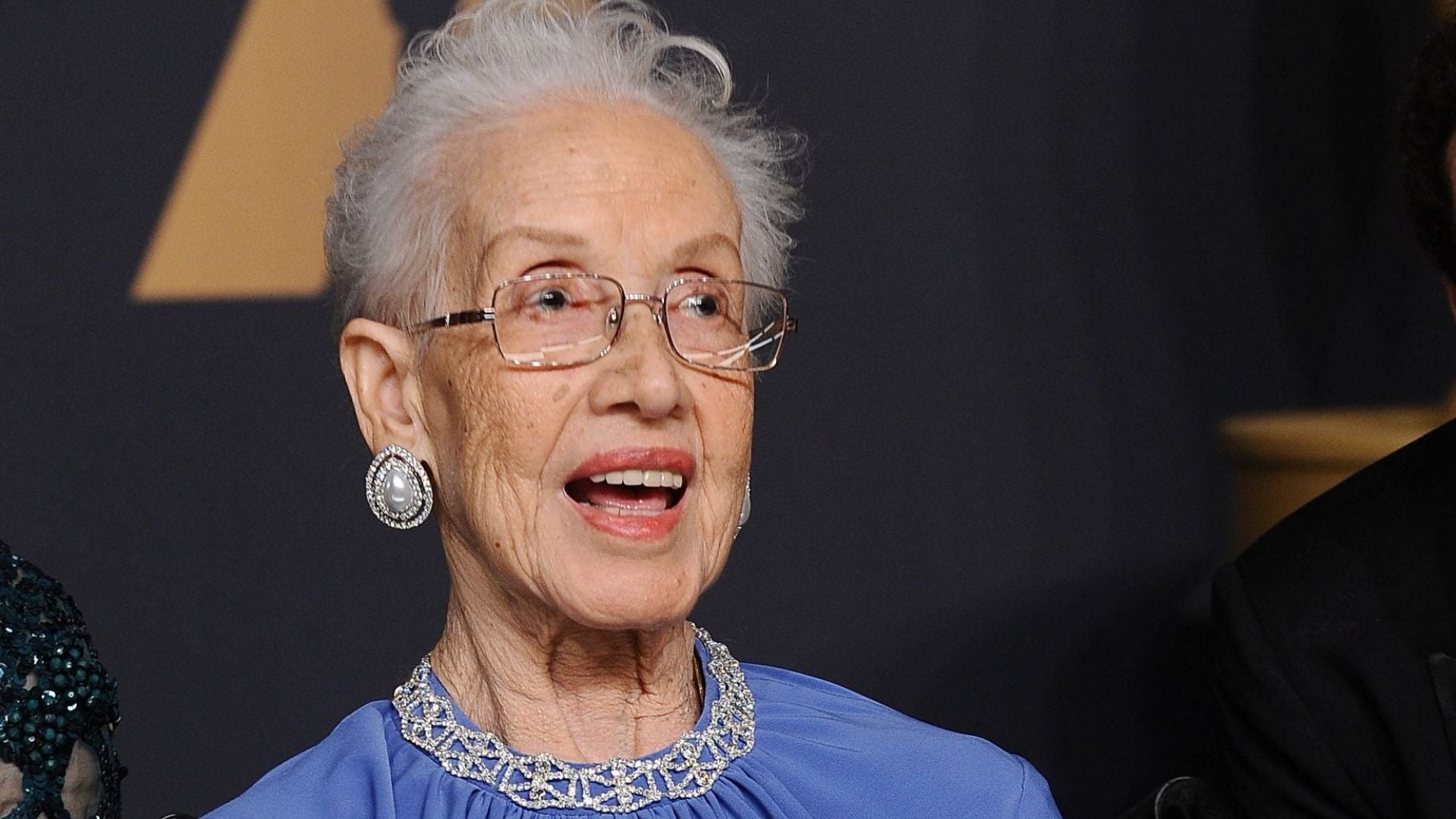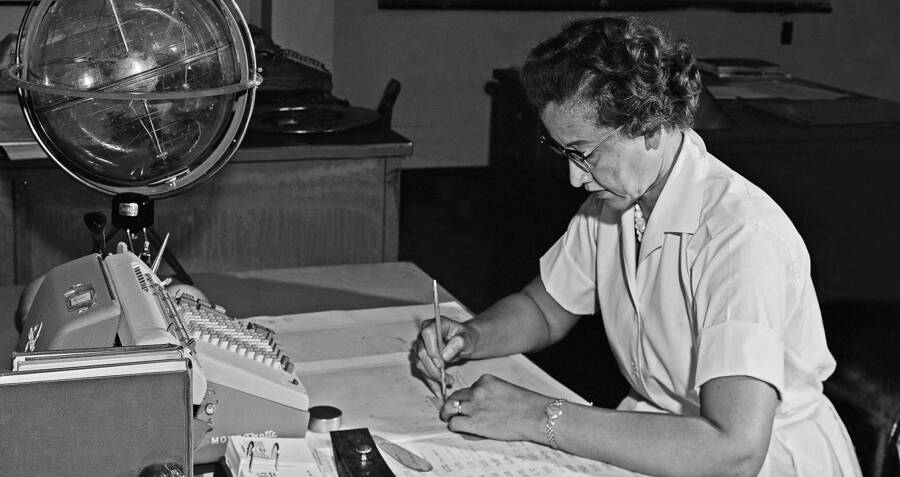


This division would eventually merge with what was previously an all-white computing division. In 1952, Katherine Johnson learned that the National Advisory Committee for Aeronautics(NACA), a US federal agency that researched flight and aviation, was hiring individuals to solve math problems in the all-female all-Black Computing division of the Langley Laboratory, in Hampton, VA. Katherine Johnson (2nd row, 2nd from the left) and her co-workers at NASA were considered “human computers.” Johnson spent the next 12 years raising her three daughters who she is survived by today. After spending a semester in the program, Johnson decided to leave and focus on her family, and got married in 1940 to James Goble. As West Virginia University began academic desegregation, Johnson was invited to do graduate work in Mathematics with two other Black students at a historically all-white institution. Johnson became a teacher after graduating at 18 years old and shared her love of learning and mathematics with students. Her family, supportive of their daughter’s educational passion, decided to pack up and move 120 miles away to Institute, WV, so that Johnson would have the opportunity to pursue higher education.īy 15 years-old, Johnson started college at West Virginia State College, where she where she double-majored in Mathematics and French and graduated summa cum laude. However, her hometown in White Sulphur Springs, WV did not offer public schooling for Black children past the 8 th grade. Johnson was so advanced in her education that she was ready to attend high school at the young age of 10, after being encouraged by her teachers to skip a few grades. Katherine Johnson would find ways to incorporate math into her everyday life, and it quickly burgeoned into her passion. As she began counting everything from steps walked to plates washed, her parents quickly learned that their daughter was no ordinary child. She learned quickly in her youth that not only did she love math, but she was exceptionally good at it. Although there were numerous challenges and barriers presented to Katherine as a young Black woman in post-Civil War America, her brilliance and intellect shined through all of the potential hardships. Hopefully it becomes a place as influential as Johnson herself.Katherine Johnson was born in 1918 in West Virginia, where the state was still deeply engrained in Southern Democratic Politics segregation continued in many institutions, and discrimination continued against Black Americans.

The NASA center is a $23-million, 37,000 facility in Hampton, Virginia. The ribbon-cutting ceremony was even attended by the group Black Girls Code. Read More: ‘Hidden Figures’ Inspired the US State Department to Create a STEM Exchange Program for Women Johnson’s character and accomplishments than this building that will bear her name.” “I can’t imagine a better tribute to Mrs. “We’re here to honor the legacy of one of the most admired and inspirational people ever associated with NASA,” David Bowles, director of the center, said in a press release. She was awarded the Presidential Medal of Freedom in 2015 for her work at NASA. Johnson helped launch astronaut John Glenn into space. Read More: Why Girls and Women in STEM Need Role Modelsīut NASA isn’t so crazy to have named the center after the iconic scientist “Hidden Figures” was a global box office success that showed how audiences everywhere are hungry for oft-overlooked stories about women of color who have made enormous contributions to the world - especially to the sciences. “You want my honest answer? I think they’re crazy,” she said, according to The Root. When asked what she thought about the decision, she had a colorful answer. Johnson, who is 99 years old, was on hand at the ribbon-cutting for the new NASA Research Center to see the new sign welcoming people to the building under her name. NASA’s new state-of-the-art research facility has been named for Katherine Johnson, the engineer who helped break racial and gender barriers inside NASA in the 1960s and whose story was immortalized in “Hidden Figures” last year. NASA is finally giving one of its most important living legends her due.


 0 kommentar(er)
0 kommentar(er)
